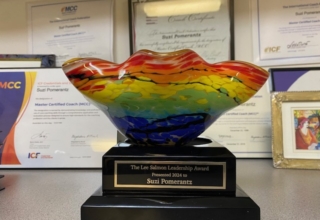
Robert Kegan (1994, p. 50) offers a similarly challenging perspective—or at least hope—regarding multiple sources of information. He presents this perspective through use of a lovely metaphor regarding sources of light:
If five lamps are lit in a large living room, how many sources of light are there? We might say that there are five sources of light. Perhaps the maker of each lamp, genuinely committed to bringing us into the light, will be partial to his own and bid us to come to that source. Or at best, some generous spirit of eclectic relativism may obtain, and the lap-makers may concede that there is a benefit to our being exposed to each of the lamps, each separate source having little to do with the other except that, like the food groups of a well-balanced diet, each has a partial contribution to make to a well-rounded, beneficial whole.
Kegan (1994, p. 50) challenges us at this point. He suggests that the nature of illumination (and sources of information) is not quite that simple:
. . . quite a different answer to the question of how many sources of light there are in the room is possible—namely, that there is only one source. All five lamps work because they are plugged into sockets drawing power from the home’s electrical system. In this view, each lamp is neither a contender for the best source of light nor a mere part of a whole. And if the lamp-maker’s mission is not first of all to bring us to the light of his particular lamp but to bring us to the light of this single source, then he can delight equally in the way his particular lamp makes use of this source and in the way other lamps he would never think to create do also. His relationship to the other lamp-makers is neither rivalrous nor laissez-faire, but co-conspiratorial: the lamp-makers breathe together.
Frans Johansson (2004) is another, somewhat more contemporary, advocate of multiplicity’s benefits. As I have already noted, Johansson derived his analysis from the cultural history of Florence Italy during the Renaissance (the Medici Effect). Johansson offers many examples of how diverse perspectives and disciplines can productively intersect and converge to create highly innovative and valuable ideas and products. I conveyed some of Johansson’ strategies earlier in this book. Having offered these persuasive examples, Johansson (2004, pp. 97-98) goes on to present a couple of reasons for the power of the Intersection of perspectives and ideas (the Medici Effect):
Why is the intersection of disciplines or cultures such a vibrant place for creativity? . . . It increases the chances that an idea will be good because it brings together very different concepts from very different fields. . . [T]here is another, stronger, reason for its power. When you connect two separate fields, you also set off an exponential increase of unique concept combinations, a veritable explosion of ideas. Or, to put it succinctly, if being productive is the best strategy to innovate, then the Intersection is the best place to innovate.
As coaches, are we in the business of helping our clients find these points of Intersection? Do we help our clients identify underlying unification in the expert perspectives and advice they are receiving? Is our job in part to help our clients find some underlying theme, pattern or personal identity while living with the crisis of expertise? Are we trying to help our clients realize the Medici Effect – and turn their 21st Century World into the Renaissance of 16th and 17th Century Florence? Are we encouraging our coaching clients to embrace a more Cosmopolitan perspective and then accepting a more Cosmopolitan perspective on the part of the experts to whom they turn?
Download Article 1K Club


















